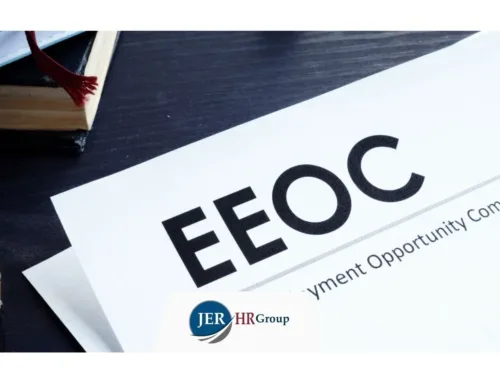The Importance of Agility
The Importance of Agility in Today’s Workplace
As leaders in our own lives, we need to bring our best to every situation. If we have learned anything from 2020, it is that we need to be more agile than ever before – our world demands it.
So, what is agility? A quick Google search tells us that Agility is defined as the ability to move quickly and easily; to think and understand quickly. Today, our workplaces demand that we think and work differently, get creative, lean in to change, and adapt.
According to the Wiley Publishing 2020 Agile Organization Survey Results which interviewed 2,500 professionals, 95% of managers, directors and executives said that in the workplace, our emotional intelligence (sometimes called “EQ”), is as important as IQ. Additionally, 86% of them said EQ is now more important than it was five years ago. The important role of EQ is not a passing trend, so let’s consider a concept based on a new assessment from Wiley Publishing, called Agile EQ.
Agile EQ identifies your strengths and specifically, your mindset. It also helps you identify the appropriate mindset for each situation.
Most of us tend to get stuck in patterns of behavior, into our comfort zones. This is natural and usually serves us well. But sometimes, this means we do not pick the best response for a situation. For instance, maybe you are a direct person and perhaps you’ve received feedback that you are too harsh or too pushy. Or maybe you value and appreciate accuracy, but you’ve had people say you take too long or have analysis paralysis. Neither style is right or wrong. There are times that being direct is THE best approach for the situation. Likewise, there are times that we need abundant analysis to be successful.
These two examples demonstrate the importance of selecting the best response or mindset for each situation.
First, imagine that you find yourself in an emergency and the paramedics arrive. Do you want your paramedics to be slow and methodical or do you want them to be commanding and direct? I want them to take charge, to act.
Conversely, there are other times that lengthy analysis is crucial. In the movie Hidden Figures, chronicling the women who helped NASA create the space program, Katherine Johnson and her colleagues had to create the perfect coordinates to get John Glenn and other astronauts safely into space and back to Earth. In this case, precision and extensive analysis was paramount.
According to the Agile EQ model, there are eight common mindsets representing the various approaches we may take in different situations. We tend to gravitate to two or three of them based on our leadership style. Even so, we can employ all eight of them. Doing so may take a bit more energy, a bit more courage, and a bit more trial and error. Which mindsets resonate with you?
Dynamic Mindset
This approach initiates action and is about influencing people, and often comes with a strong social presence.
Outgoing Mindset
The Outgoing Mindset is about establishing and maintaining relationships, and often includes expressions of emotions and unfiltered thoughts. This is a people-focused mindset.
Empathizing Mindset
This mindset has people reaching out with compassion, seeking to understand people’s emotional needs, their struggles, and offering support.
Receptive Mindset
This mindset reflects one’s ability to stay open to thoughts and ideas from others, and is often comfortable with compromise, sometimes at the expense of their own thoughts and ideas.
Composed Mindset
This is when you reflect before you act, maintaining composure even under stress. Those with a Composed Mindset are often great at exercising diplomacy.
Objective Mindset
These are the individuals who are skilled at separating fact from emotions; they are grounded in logic.
Resolute Mindset
This mindset means you can stand your ground even in the face of opposition, speak up about problems, and push through resistance.
Self-Assured Mindset
These individuals are very comfortable asserting their rights and opinions, are usually confident, and often like to take charge.
So, what mindset resonated with you? No one mindset holds more value than another; they all have their merits.
When we understand our current strengths, have the knowledge of what else is available to us, and exercise willingness to expand our mindset, we become more agile.
Agility means recognizing and utilizing the best mindset for the situation at hand. To do this, we need to have a certain level of EQ. If you are a leader, you need to understand how EQ and mindset impacts the entire organization.
When asked about culture and productivity, the 2020 Agile Organization survey found that 79% of those polled have worked on a team where low EQ hurt productivity. 80% said they’ve seen low EQ produce a toxic culture and 41% left a job because they were working with people who had a low EQ. What does toxicity cost your bottom line? It is vital that we invest in our EQ and understand how to employ the best mindset for a situation.
If you’d like to learn more about how Agile EQ can improve your workplace culture, please email JER HR Group or call us at (866) 475-7687.
Liz P. Summers is a Senior Consultant with JER HR Group. An experienced facilitator, speaker and leadership advocate, Liz works with individuals and groups to increase individual and organizational effectiveness and performance, including capacity building, team building, leadership development, and change management. With over 20 years of leadership, sales and marketing experience, Liz offers a unique understanding of organizational challenges. Email Liz
The Importance of Agility
The Importance of Agility in Today’s Workplace
As leaders in our own lives, we need to bring our best to every situation. If we have learned anything from 2020, it is that we need to be more agile than ever before – our world demands it.
So, what is agility? A quick Google search tells us that Agility is defined as the ability to move quickly and easily; to think and understand quickly. Today, our workplaces demand that we think and work differently, get creative, lean in to change, and adapt.
According to the Wiley Publishing 2020 Agile Organization Survey Results which interviewed 2,500 professionals, 95% of managers, directors and executives said that in the workplace, our emotional intelligence (sometimes called “EQ”), is as important as IQ. Additionally, 86% of them said EQ is now more important than it was five years ago. The important role of EQ is not a passing trend, so let’s consider a concept based on a new assessment from Wiley Publishing, called Agile EQ.
Agile EQ identifies your strengths and specifically, your mindset. It also helps you identify the appropriate mindset for each situation.
Most of us tend to get stuck in patterns of behavior, into our comfort zones. This is natural and usually serves us well. But sometimes, this means we do not pick the best response for a situation. For instance, maybe you are a direct person and perhaps you’ve received feedback that you are too harsh or too pushy. Or maybe you value and appreciate accuracy, but you’ve had people say you take too long or have analysis paralysis. Neither style is right or wrong. There are times that being direct is THE best approach for the situation. Likewise, there are times that we need abundant analysis to be successful.
These two examples demonstrate the importance of selecting the best response or mindset for each situation.
First, imagine that you find yourself in an emergency and the paramedics arrive. Do you want your paramedics to be slow and methodical or do you want them to be commanding and direct? I want them to take charge, to act.
Conversely, there are other times that lengthy analysis is crucial. In the movie Hidden Figures, chronicling the women who helped NASA create the space program, Katherine Johnson and her colleagues had to create the perfect coordinates to get John Glenn and other astronauts safely into space and back to Earth. In this case, precision and extensive analysis was paramount.
According to the Agile EQ model, there are eight common mindsets representing the various approaches we may take in different situations. We tend to gravitate to two or three of them based on our leadership style. Even so, we can employ all eight of them. Doing so may take a bit more energy, a bit more courage, and a bit more trial and error. Which mindsets resonate with you?
Dynamic Mindset
This approach initiates action and is about influencing people, and often comes with a strong social presence.
Outgoing Mindset
The Outgoing Mindset is about establishing and maintaining relationships, and often includes expressions of emotions and unfiltered thoughts. This is a people-focused mindset.
Empathizing Mindset
This mindset has people reaching out with compassion, seeking to understand people’s emotional needs, their struggles, and offering support.
Receptive Mindset
This mindset reflects one’s ability to stay open to thoughts and ideas from others, and is often comfortable with compromise, sometimes at the expense of their own thoughts and ideas.
Composed Mindset
This is when you reflect before you act, maintaining composure even under stress. Those with a Composed Mindset are often great at exercising diplomacy.
Objective Mindset
These are the individuals who are skilled at separating fact from emotions; they are grounded in logic.
Resolute Mindset
This mindset means you can stand your ground even in the face of opposition, speak up about problems, and push through resistance.
Self-Assured Mindset
These individuals are very comfortable asserting their rights and opinions, are usually confident, and often like to take charge.
So, what mindset resonated with you? No one mindset holds more value than another; they all have their merits.
When we understand our current strengths, have the knowledge of what else is available to us, and exercise willingness to expand our mindset, we become more agile.
Agility means recognizing and utilizing the best mindset for the situation at hand. To do this, we need to have a certain level of EQ. If you are a leader, you need to understand how EQ and mindset impacts the entire organization.
When asked about culture and productivity, the 2020 Agile Organization survey found that 79% of those polled have worked on a team where low EQ hurt productivity. 80% said they’ve seen low EQ produce a toxic culture and 41% left a job because they were working with people who had a low EQ. What does toxicity cost your bottom line? It is vital that we invest in our EQ and understand how to employ the best mindset for a situation.
If you’d like to learn more about how Agile EQ can improve your workplace culture, please email JER HR Group or call us at (866) 475-7687.
Liz P. Summers is a Senior Consultant with JER HR Group. An experienced facilitator, speaker and leadership advocate, Liz works with individuals and groups to increase individual and organizational effectiveness and performance, including capacity building, team building, leadership development, and change management. With over 20 years of leadership, sales and marketing experience, Liz offers a unique understanding of organizational challenges. Email Liz






